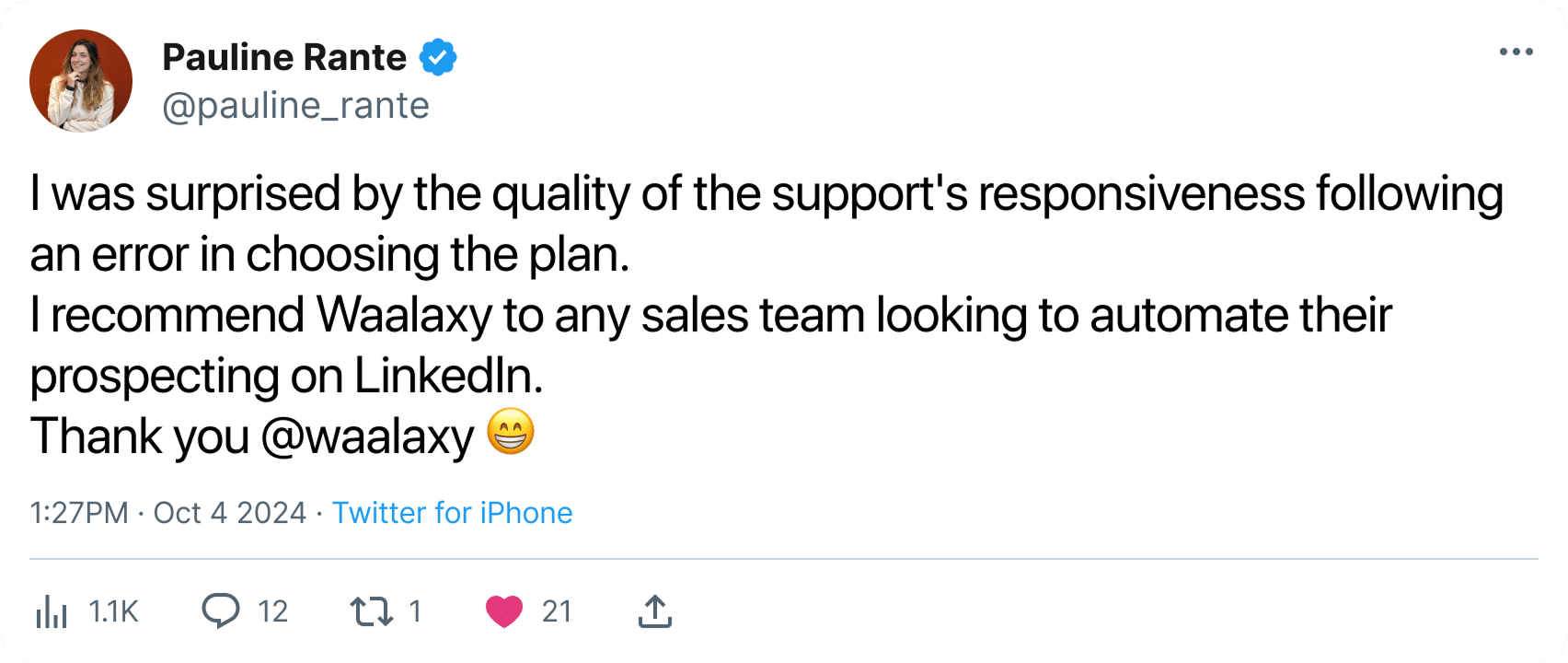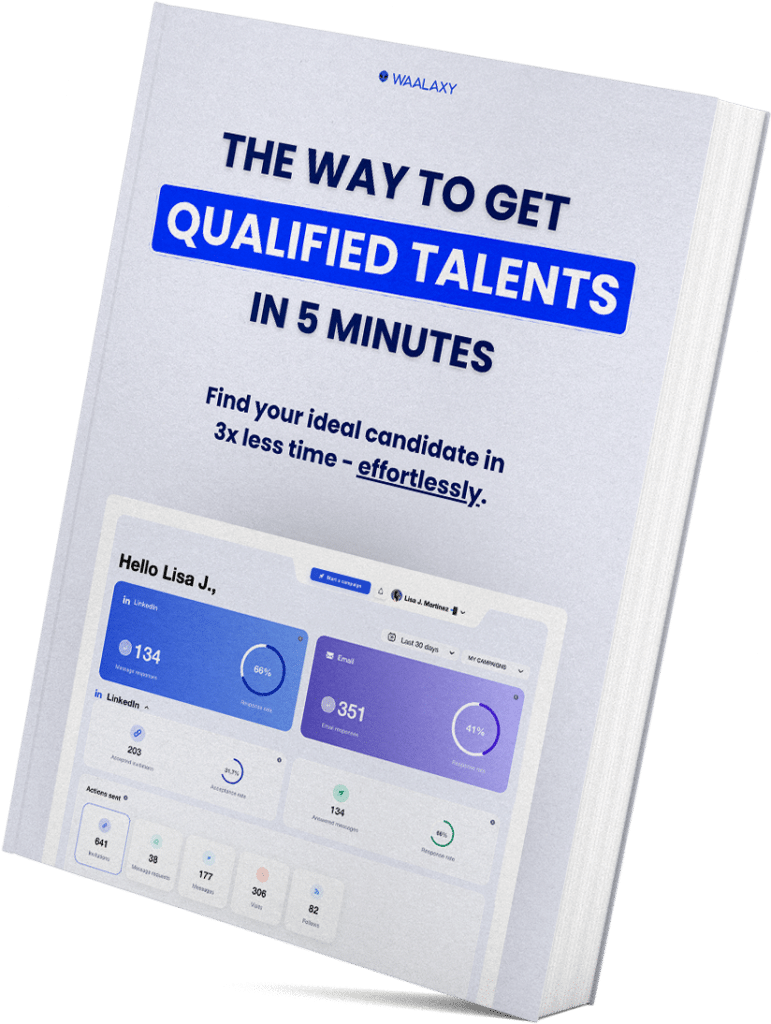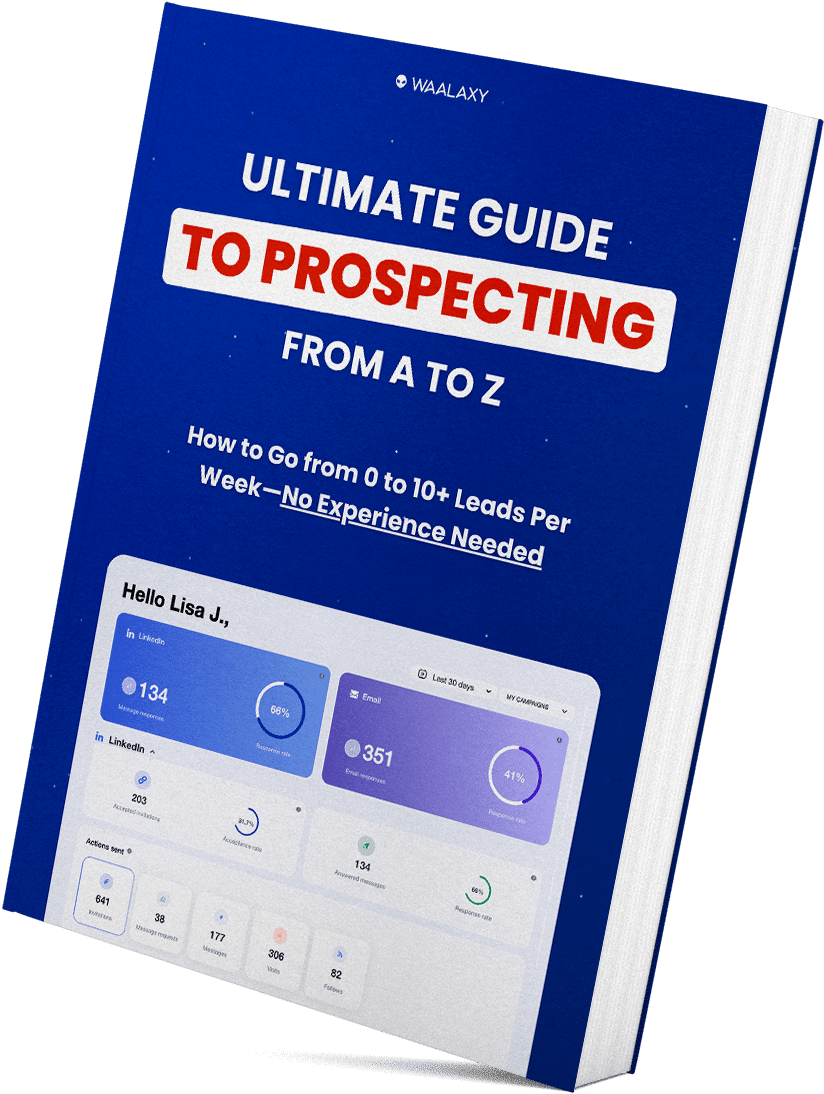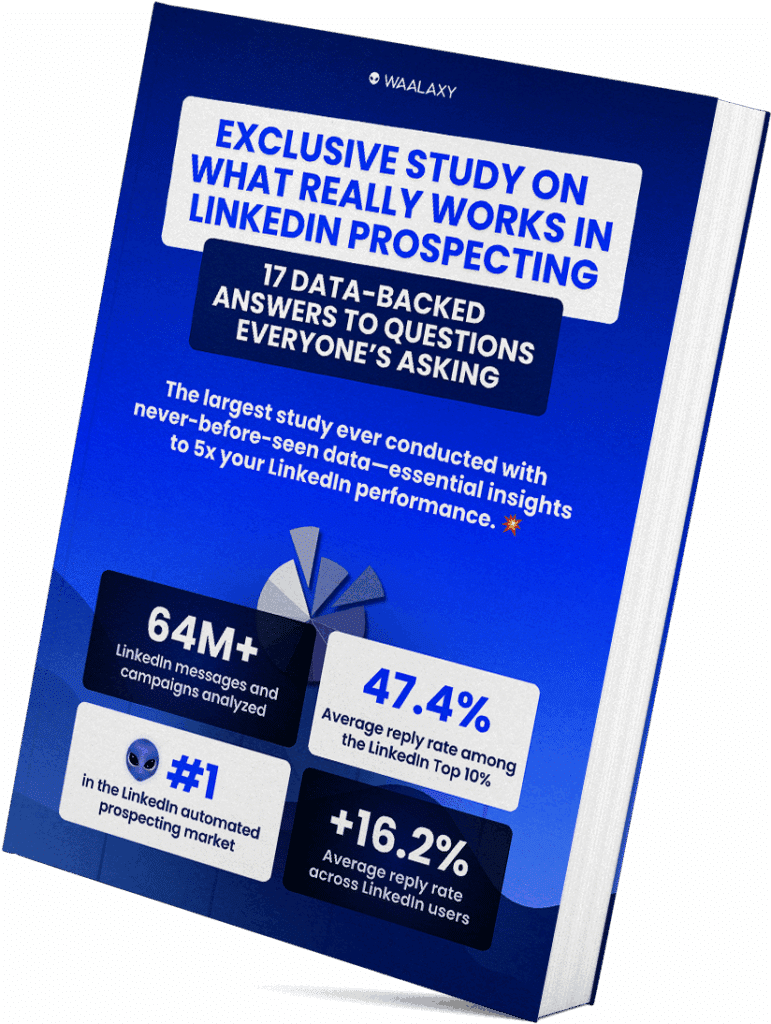What if you could talk to your customers at the exact moment they’re ready to act, thanks to trigger marketing?
This technique uses triggers to create personalized interactions. 🎯
But how does it work? What types of triggers can you use? 👀
Good thing we’re going to explain it all to you now! (Reading time: about 3 minutes).
What is trigger marketing?
Trigger marketing, also known as trigger marketing, is a strategy that uses specific events to automatically launch targeted marketing actions. 🎯
These triggers can be linked to :
- 🔹User behavior.
- 🔹External event.
- 🔹Stage in the customer journey.
The objective? Send the right message, to the right person, at the right time, to maximize impact and engagement! 💪🏼
For example, when a customer abandons their online shopping cart, a brand can send them a reminder email, along with a promotional offer. 👀
What makes trigger marketing so powerful is its ability to combine automation and personalization.
Why? 🤔
Well, thanks to the data collected (purchase history, browsing, location), brands can create relevant interactions, responding to customer expectations or needs. 🫶🏼
How to measure effectiveness?
It’s good to adopt a strategy, but it’s even better to analyze it to find out if it’s working!
To do this, there are several key performance indicators (KPIs):
- Open rate ⭢ people who open your emails after a trigger.
- Click-through rate ⭢ how many recipients interact with your content.
- Conversion rate ⭢ number of concrete actions taken (purchase, registration, download) following a campaign.
- Unsubscribe or reject rate ⭢ helps identify messages that are too intrusive or poorly targeted.
You can also analyze response times (time between trigger and customer action), to optimize your campaigns.
Advantages and disadvantages
Here is a table showing the advantages and disadvantages of trigger marketing:
| ✅ Advantages | ❌ Disadvantages |
|---|---|
| Increased personalization: messages are tailored to customers’ specific actions or needs, boosting engagement. | Data dependency: Without accurate data collection and analysis, campaigns can be less relevant. |
| Better timing: Campaigns are triggered at the right moment, increasing the chances of conversion. | Technical complexity: Setting up marketing automation tools can be costly and require specific skills. |
| Efficient automation: Once configured, actions run automatically. | Risk of over-solicitation: Too many messages can be perceived as intrusive and annoy customers. |
| Improved ROI: By precisely targeting customer needs, campaigns often generate better performance. |
6 examples of marketing triggers to know
Now that you know what triggers are, let’s take a look at the different types you can use. ⬇️
1) Time trigger
The time trigger is triggered at a specific date or period. It can be :
- An occasion (birthday, end of year).
- A deadline (deadline for an offer).
The aim is to take advantage of the timing to capture attention and prompt action.
Here’s how to set it up:
- 1️⃣ Identify key moments ⭢ universal dates (Christmas, Black Friday) or personal dates (birthdays).
- 2️⃣ Automate mailings ⭢ use marketing automation software to schedule your campaigns according to dates.
- 3️⃣ Propose an exclusive offer ⭢ combine your message with a promotional offer or unique content.
Small example:
An online professional training company sends an e-mail to its customers 30 days before the end of their annual training credits. The subject line is “Your credits expire soon – use them before 13.01.2025”.
This type of trigger creates a feeling of exclusivity and personalization, motivating people to act quickly. 💪🏼
2) Behavioral trigger
Here, the behavioral trigger is activated according to a user’s actions or, conversely, inactions. 🗯️
This can be :
- A visit to a specific page.
- A click on a link.
- A download.
- A shopping cart abandonment.
The aim is to react quickly and appropriately to observed behavior.
Okay, but how do you implement it? 🤔
First, we need to analyze 🔎 user behavior, i.e. identify the key actions to track (page views, registrations).
Then start setting up rules in your tools. For example, use marketing automation software (like Waalaxy 👽) to automatically trigger an appropriate response.
Finally, don’t forget to personalize your messages, i.e. to respond directly to the prospect’s need.
Here’s an example. ⬇️
A prospect downloads a white paper from your site. A few hours later, an automated email offers him a demonstration of your product via a link to the downloaded content.
3) Contextual trigger
This trigger is based on external or situational elements, let me explain.
Basically, it’s going to be geolocation, weather, or even an event in progress. 🌞
So the aim here is to offer an immediate response based on the customer’s context. 👀
To achieve this, there are 3 golden rules:
- 🥇 Identify contexts: what will influence your customers? (example: seasonality, location).
- 🥈 Integrate tracking tools: like mobile apps for geolocation.
- 🥉 Trigger automatic actions : program your campaigns to respond quickly (notifications, emails, SMS).
Here’s what it looks like for a business in b2b:
A logistics solutions provider uses geolocation to identify prospects attending a trade show. A notification is therefore sent to attendees who are in the vicinity of the booth, this is an invitation to a demonstration. ✨
4) Emotional trigger
With the emotional trigger, we’ll use a message or perform an action that elicits an emotional reaction in the customer or prospect. 🤩
This could be a sense of urgency, curiosity, nostalgia or the fear of missing out on something.
The aim here is to motivate immediate action by playing on emotions.
It’s all well and good to want to make your prospects feel nostalgic, as if they’d been watching Bambi, but, how do you set it up? 🤔
Well:⭣
- Identify emotional levers.
- Have an engaging tone.
- Personalize your approach.
For example:
A marketing agency sends an e-mail to a company or specifies a few things, such as “You may be losing customers because of a slow site, try our free audit”.
By doing so, this trigger captures the customer’s attention, as they may be afraid of missing out. 👀
5) Loyalty trigger
We now move on to the loyalty trigger, which aims 🏹 to reward loyal customers based on their commitment or purchase history.
The aim is to strengthen customer relations by rewarding their loyalty.
To achieve this, there are several tips: 👇🏼
- 1️⃣ Analyze customer engagement: check the most active customers.
- 2️⃣ Create personalized rewards: these can be discounts, gifts or exclusive access to products.
- 3️⃣ Automate rewards: program marketing actions (number of purchases, seniority, anniversary).
For example:
A Saas company sends a thank-you email to its former customers, with a bonus two-month subscription, to thank them for their loyalty. They also send an invitation to preview their new feature.
6) Personalization trigger
The last trigger is the personalization trigger. This is based on specific customer data, such as preferences, purchase history or previous interactions with the brand.
We want to offer them a tailor-made experience that matches perfectly their expectations and needs.
To achieve this, we must respect these 3 points:
- Prioritize relevant data: a customer who has visited a product page several times is a stronger signal than a simple subscriber to your newsletter.
- Use dynamic content: configure your emails or pages to adapt to each user’s profile.
- Segment intelligently: group your customers by similar interests or needs.
For example:
HR management software identifies 🔎 that some SMEs among its prospects are downloading content on process automation. This system triggers an automatic email with a case study of a similar company.
How to set up trigger marketing?
With the right strategy and the right tools, you can start setting up your trigger marketing. 👀
You don’t need to be a technical expert to do it, just follow these 3 steps! ⬇️
1) Collect and analyze data
Before automating anything, you need to understand your prospects (or customers), to identify which triggers are most relevant to them. 👀
To do this, start by identifying 🔎 useful data.
Depending on your objectives, this could be :
- Behavioral information (pages visited, clicks, downloads).
- Transactional information (purchase history, amounts spent).
- Contextual information (location, current events).
This data is usually available on your website, a CRM, or even your email campaigns.
Next, you need to organize your data, i.e. group it together on a CRM or marketing automation tool.
Why? 🤔
Well, because you’re going to get an overview of your customers, and you’re going to be able to easily identify recurring behaviors. 👀
Finally, consider analyzing behaviors by asking yourself, “What are the times when your prospects show strong interest?” 📆
For example, repeated visits to a product page or cart abandonment are important indicators.
Remember to respect privacy rules and regulations (such as RGPD).
2) Create triggering content
Successful trigger content is that which captivates and incites action! So, here are a few tips on how to achieve this. 👀
1️⃣ Understand the intention behind the trigger.
Every trigger stems from a specific situation.
For example:
- 🛒 For a cart abandonment, don’t hesitate to highlight the benefits of the product or add an exclusive offer.
- 🎂 For a birthday, speak festively.
2️⃣ Refine your message.
The idea is to create an emotional connection, such as: “You were interested in this product? Here’s an offer just for you”.
3️⃣ Create a sense of urgency.
In marketing, urgency works. When you’re browsing on ASOS and you see your little pair of jeans at 30% off and only 3 items left in stock, you’re quick to get out your credit card! 💳
Well, here it’s the same, you can use phrases like: “Only 24 hours left to take advantage”, or “This offer is reserved for our best customers”. 👀
If you don’t have too many ideas, you can use personalization and automation software like Waalaxy pure to create trigger content that will be tailored to each prospect.
With it, you’ll be able to :
- Personalize your messages with variables.
- Create automated sequences where each trigger is adapted to your prospect’s behavior.
- Track campaign statistics (click-through, open and engagement rates).
For example, a B2B salesperson can set up a sequence to follow up an inactive prospect. A LinkedIn message is sent, followed by an email with a personalized offer if no response is received.
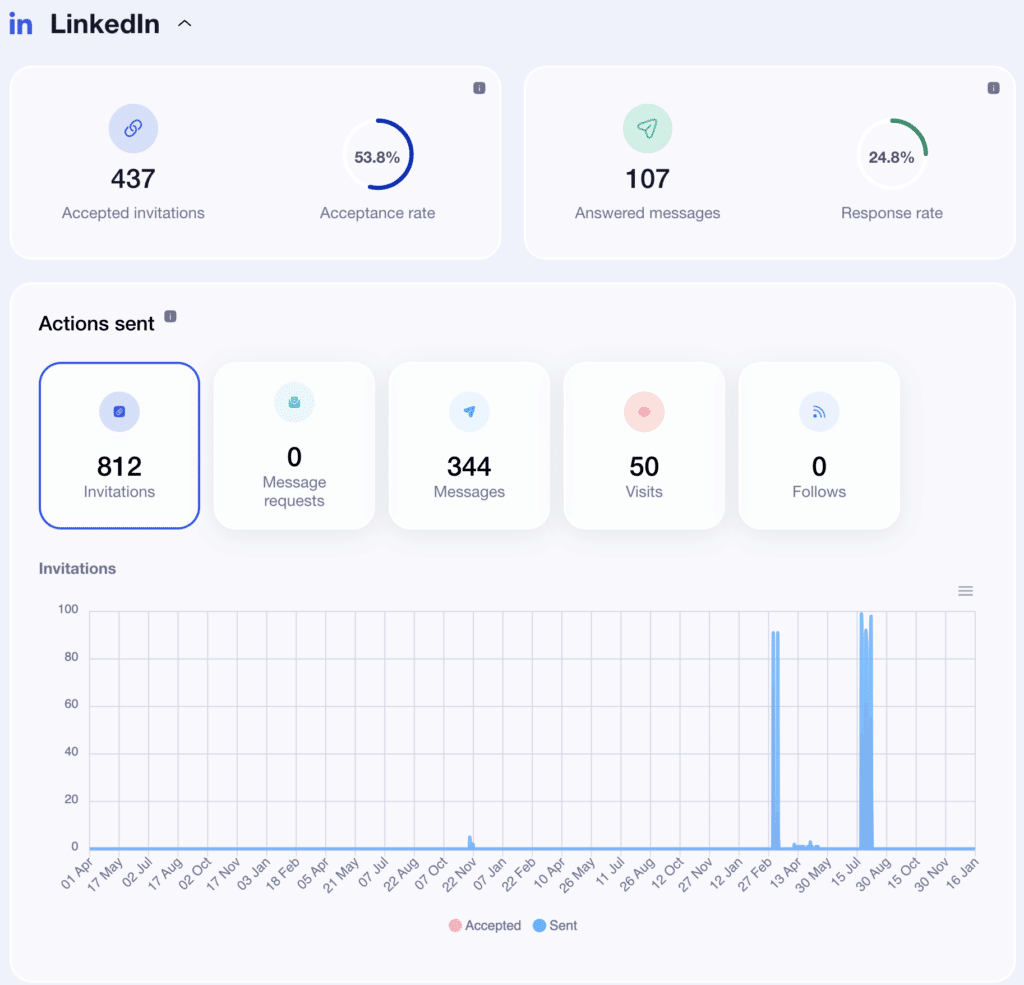
3) Automate your trigger
Once your data has been collected and your trigger content is ready, the last step is automation. This is what’s going to ensure that your messages are sent at the right time, to the right person, and with the right content. 👀
To do this, you first need to choose an automation tool. There are several, but our favorite is Waalaxy 🙄.
Once you’ve decided your tool, we can move on to the smart workflow configuration part. 🧠
A workflow is the path your prospect or customer will follow after the trigger has been triggered.
For example:
- 🟣 A prospect subscribes to a newsletter ⭢ automatic sending of a welcome email.
- 🟣 If the email is opened ⭢ follow-up with additional content (guide, white paper).
- 🟣 If no response after 7 days ⭢ personalized reminder sent.
Finally, don’t hesitate to use the statistics that the tools have to adjust your campaigns.
For example, Mailchimp offers open rate, click rate and conversion rate.
With it, you’ll be able to automate sequences like a reminder after a cart abandonment. 👜
This can be :
- Day 1: reminder with a special offer.
- Day 3: customer testimonial to reassure.
- Day 3: final reminder with a countdown to create a sense of urgency.
How about a recap?
What if trigger marketing became your strategy’s secret weapon? 🔫
A method that, used properly, can turn a simple click into a big opportunity!
But it’s not that simple. The key to this strategy lies in execution. 👈🏼
Insist too much, and you risk becoming intrusive. Don’t do enough, and all your efforts will go to waste. 🗑️
So, what to do? 🤔
Well, you need to understand your customers better than they understand themselves, anticipate their needs before they express them. And above all, know how to trigger the right emotion at the right time. ⏰
In short, trigger marketing isn’t just a strategy, it’s an invitation to rethink the way you interact with your customers. 💬
Finally, the question is no longer “Should you use trigger marketing”, but rather “Are you ready to exploit its full potential”?
The answer depends on your vision. 👁️
What types of trigger are there?
There are a number of different types of triggers, to meet specific needs in the customer journey. Here are the main ones:
- Time triggers.
- Behavioral trigger.
- Transactional trigger.
- Event-based trigger.
- Inactivity-based trigger.
A little tip: if you combine certain triggers, you’ll be able to create concrete campaigns. 🦾
Which trigger can be used to define an automatic action when a contact completes an email campaign?
Behavioral triggers make it possible to use the actions of the campaign’s recipient to personalize the rest of the campaign. It’s an effective way of staying relevant, based on the contact’s actual engagement, whether they’ve clicked, opened the emails, or, on the contrary, ignored the messages.
If need be, you can use other triggers, such as :
- 🔵 Temporal trigger: program an action based on a given period after the end of the campaign.
- 🔵 Transactional trigger: choose an action that can be triggered automatically depending on whether the objective has been reached.
What are the five means of marketing communication?
Here are the 5 main means of marketing communications:
- Advertising.
- Direct marketing.
- Public relations.
- Sales promotion.
- Digital marketing.
Now you know all about trigger marketing. See you soon! 🐉


